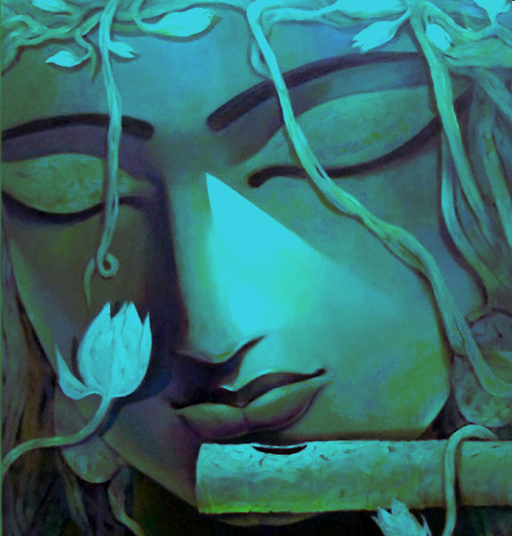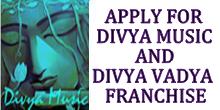Slave to the Game
Online Gaming Community
Knowledge Base - Indian Dances
Different dancing styles and forms of dances in India are very ancient and highly developed performing arts. The classical and folk dance styles in India usually have the devotional nature associated with them. All classical dance forms in India have two main aspects - Nritta and Nrittya. Divya Music presents details on a few major classical and folk dance styles – solo dances / group dances practiced in India. Divya Music offers dance training courses / lessons for the following dance styles:
Indan Classical Dances
Bharata Natyam
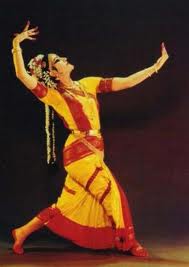 Bharata Natyam : Originated from Tamil Nadu state in Southern India, it has style that boasts
strength & beauty. This style has balanced and dynamic positions too. In dance, Bharat Natyam is like
a diamond and has many steps to be in rhythm and expressive positions. It’s the combination of melody
& rhythm, poetry & drama, expression & sculpture, color & traditions. These all aspects make it world’s
most popular Indian dance.
Bharata Natyam : Originated from Tamil Nadu state in Southern India, it has style that boasts
strength & beauty. This style has balanced and dynamic positions too. In dance, Bharat Natyam is like
a diamond and has many steps to be in rhythm and expressive positions. It’s the combination of melody
& rhythm, poetry & drama, expression & sculpture, color & traditions. These all aspects make it world’s
most popular Indian dance.
Manipuri
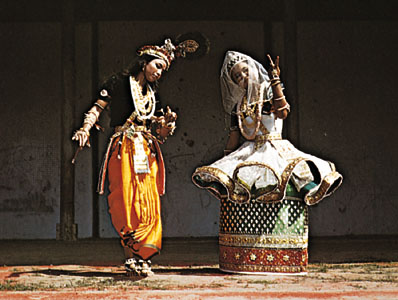 Manipuri : It originated from Manipur state in North East of India. It’s a devotional & regional
dance where dancers devote themselves to Lord Krishna or Lord Vishnu. Traditionally, this dance style
has been taught to the devotees by the local priests. If a person wanted to learn Manipuri, there was
no special Guru to teach Manipuri, just visiting a regional priest called ‘Ojha’ was enough to start
learning Manipuri at priest’s home. This dance style is very smooth, simple, clean and elegant. The
dance is performed by male dancers & female dancers both and the difference is visible very clearly.
The female dancer is very poised and gentle and the male dancer is powerful and energetic. Overall,
this dance is never aggressive and loud. It’s main theme is for the Shirngar - Bhakti
(love & devotional aspect) dance dedicated to God.
Manipuri : It originated from Manipur state in North East of India. It’s a devotional & regional
dance where dancers devote themselves to Lord Krishna or Lord Vishnu. Traditionally, this dance style
has been taught to the devotees by the local priests. If a person wanted to learn Manipuri, there was
no special Guru to teach Manipuri, just visiting a regional priest called ‘Ojha’ was enough to start
learning Manipuri at priest’s home. This dance style is very smooth, simple, clean and elegant. The
dance is performed by male dancers & female dancers both and the difference is visible very clearly.
The female dancer is very poised and gentle and the male dancer is powerful and energetic. Overall,
this dance is never aggressive and loud. It’s main theme is for the Shirngar - Bhakti
(love & devotional aspect) dance dedicated to God.
Kathak
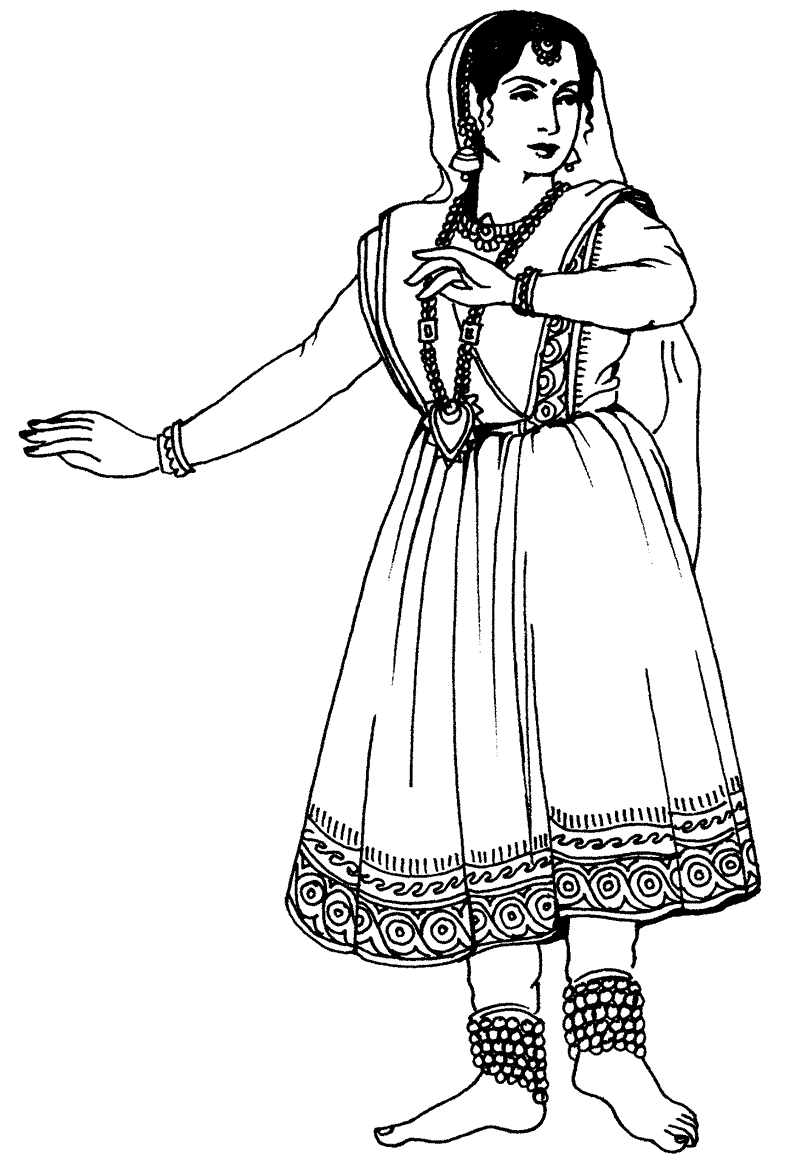 Kathak : It originated from ‘Braj’ region in Uttar Pradesh state of northern India. The word
‘Kathak’ means ‘Katha’ (story in Hindi) – a story being narrated through the dance. Everyone like stories
and in Kathak dance stories the facial expression and style does matter and in that manner to tell a
story by dance is called ‘kathak’. In this dance style the skills included are recitation, singing,
acting & dancing. This dance originally developed close to Lord Krishna’s birth place in 15th century
AD through ‘Ras-leela’ – the divine dance in ‘Braj’. With the passing time the meaning and aim of this
traditional devotional dance format has also changed and the devotional lyrics have been replaced by
very fast rhythm.
Kathak : It originated from ‘Braj’ region in Uttar Pradesh state of northern India. The word
‘Kathak’ means ‘Katha’ (story in Hindi) – a story being narrated through the dance. Everyone like stories
and in Kathak dance stories the facial expression and style does matter and in that manner to tell a
story by dance is called ‘kathak’. In this dance style the skills included are recitation, singing,
acting & dancing. This dance originally developed close to Lord Krishna’s birth place in 15th century
AD through ‘Ras-leela’ – the divine dance in ‘Braj’. With the passing time the meaning and aim of this
traditional devotional dance format has also changed and the devotional lyrics have been replaced by
very fast rhythm.
Odissi
 Odissi : Originated from Orissa state of India, which is located on the eastern coast of
central India. This state is very old and rich in culture, traditions and religious beliefs. In India,
dance are always related to devotion towards God and devotee pays their devotion through dance.
Odissi : Originated from Orissa state of India, which is located on the eastern coast of
central India. This state is very old and rich in culture, traditions and religious beliefs. In India,
dance are always related to devotion towards God and devotee pays their devotion through dance.
Today, in present “Tabu” & “Pallvi” is most famous sculptural poses and dance style practiced
in Odissi dance. The ‘ashtapadi’ is a great part in Odissi dance, ‘Moksha (salvation) is also an
important part where a dancer pays homage to God, to the Guru and to audience before ending her
performance. In the Odissi dance style, the sacred verses from the ‘Gita-Govind’ are narrated as
the main part of lyrics.
Kuchipudi
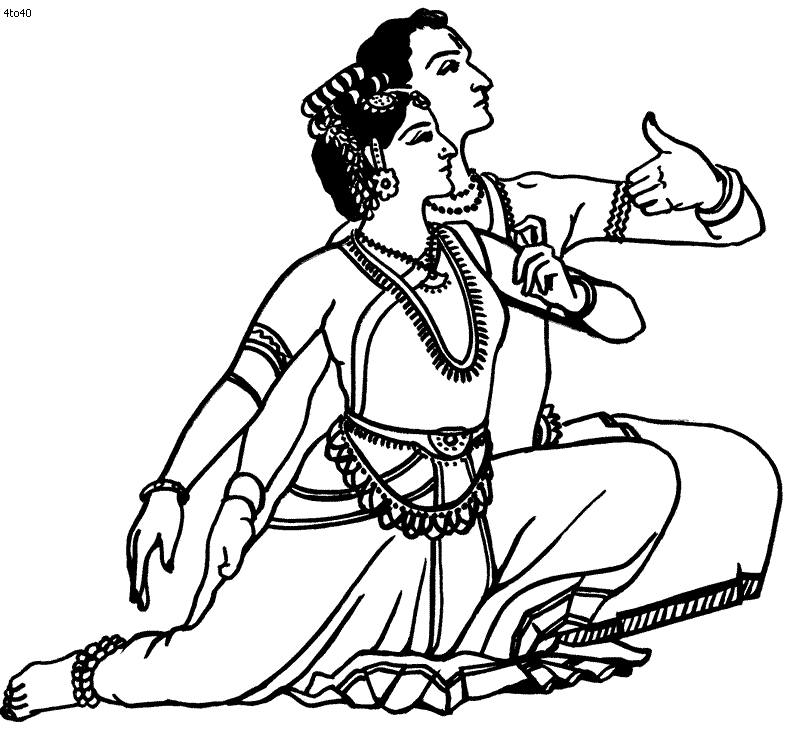 Kuchipudi : Kuchipudi dance belongs to a little village by the name Kuchipudi itself
in the southern Indian state of Andhra pardesh. It’s based on stories from the Puranas. In
this dance, dancer is required to sing, dance and deliver the dialogue. This form is still
prevalent and popular. In the kuchipudi dramas male dancers impersonate the female characters.
Women are not permitted to take part in this dance drama at all.
Kuchipudi : Kuchipudi dance belongs to a little village by the name Kuchipudi itself
in the southern Indian state of Andhra pardesh. It’s based on stories from the Puranas. In
this dance, dancer is required to sing, dance and deliver the dialogue. This form is still
prevalent and popular. In the kuchipudi dramas male dancers impersonate the female characters.
Women are not permitted to take part in this dance drama at all.
Mohini-Attam
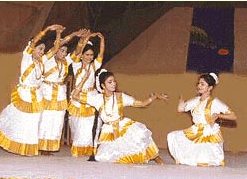 Mohini-Attam : Is the dance style developed by the women in Kerala state of southern
India. This dance has the ancient history, which belong to Hindu mythology. The drums called
edakka and maddalam are used in this dance like the kathakali style but it has no harsh movement
like kathkali.
Mohini-Attam : Is the dance style developed by the women in Kerala state of southern
India. This dance has the ancient history, which belong to Hindu mythology. The drums called
edakka and maddalam are used in this dance like the kathakali style but it has no harsh movement
like kathkali.
Sattriya
 Sattriya :It is much unknown form of Indian classical dance, relates to the beautiful
state of Assam in north east India. It was originated by Srimant Sankaradeva, the man who
started the “bhakti movement” (devotional movement) with the Assameese people and was the
well known poet, playwright and artist of his time. This name of the dance style is also
related to the name of ‘Sattra’ village in Assam.
Sattriya :It is much unknown form of Indian classical dance, relates to the beautiful
state of Assam in north east India. It was originated by Srimant Sankaradeva, the man who
started the “bhakti movement” (devotional movement) with the Assameese people and was the
well known poet, playwright and artist of his time. This name of the dance style is also
related to the name of ‘Sattra’ village in Assam.
Kathkali
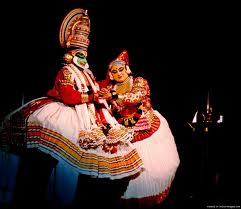 Kathkali : Kathkali dance is very exciting and is the traditional dance form
the southern Indian of Kerala. “Katha” means a story and “kali” is play. It’s also
based on Hindu mythology story. Of the masked dance forms in India, kathkali is the
most vibrant, colorful and the most intricate one. The kathkali troupes became famous
for their presentation of “Epic tales” taken from the Puranas.
Kathkali : Kathkali dance is very exciting and is the traditional dance form
the southern Indian of Kerala. “Katha” means a story and “kali” is play. It’s also
based on Hindu mythology story. Of the masked dance forms in India, kathkali is the
most vibrant, colorful and the most intricate one. The kathkali troupes became famous
for their presentation of “Epic tales” taken from the Puranas.
This dance also faced the bad days, but in 1930, the poet Vallathol Narayana Menon
saved this art and established a wonderful training school for performing the kathkali
in a place called Shoranpur. Later this was called the “Kalamandlam”. “Kathkali dance”
teachers are called “Ashaans”. This dance is always performed in the night. For performing
this art only two things are required a wooden stool and a small curtain, it called a “therashila”.
Allover, this dance style is very magical, vibrant and colorful, easy and dramatic art.
Indian Folk Dances
Regional / Folk / Tribal dance styles in India
Bihu
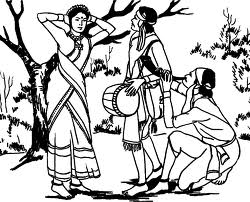 Bihu : The Bihu dance is a folk dance from the Indian state of Assam which is
related to the festival of Bihu.This joyous dance is performed by both young men and young women,
it is characterized by brisk dance steps,and rapid hand movements. Dancers wear traditionally
colorful Assamese dresses when perform the Bihu dance.
Bihu : The Bihu dance is a folk dance from the Indian state of Assam which is
related to the festival of Bihu.This joyous dance is performed by both young men and young women,
it is characterized by brisk dance steps,and rapid hand movements. Dancers wear traditionally
colorful Assamese dresses when perform the Bihu dance.
Garba
 Garba : Garba is a form of group dance that originated in the western Indian state of
Gujarat. The name 'Garba' is originated from the Sanskrit term 'Garbha' (womb) and 'Deep'
(a small earthenware lamp). Many traditional Garbas are performed by the dancers around a
central lit lamp or picture or statues of different avatars of mother Goddess 'Shakti'.
Garba is usually performed during the nine day festivals called 'Navratri' dedicated to the
mother Goddess and celebrated twice a year, The circular and spiral pattern of Garba dance
have similarities to other spiritual dances, such as those of Sufi culture.
Garba : Garba is a form of group dance that originated in the western Indian state of
Gujarat. The name 'Garba' is originated from the Sanskrit term 'Garbha' (womb) and 'Deep'
(a small earthenware lamp). Many traditional Garbas are performed by the dancers around a
central lit lamp or picture or statues of different avatars of mother Goddess 'Shakti'.
Garba is usually performed during the nine day festivals called 'Navratri' dedicated to the
mother Goddess and celebrated twice a year, The circular and spiral pattern of Garba dance
have similarities to other spiritual dances, such as those of Sufi culture.
Raas - Dandiya / Garba
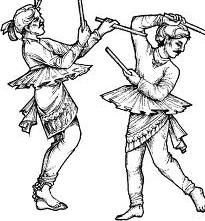 Raas - Dandiya / Garba : Raas or Dandiya Raas is the traditional folk dance form of
Vrindavan region in northern India, where it is performed depicting scenes of Holi, and 'lila'
of Krishna and Radha. Along with Garba, it is the featured dance of Navratri festivities in India.
The word "Raas" comes from Sanskrit word "Ras". The origins of Raas can be traced to ancient times.
Lord Krishna performed Rasa lila" (Lila means Lord Krishna's playful dance. The word "Lila" also
refers to the things that God does that we do not fully understand).
There are several forms of Raas including 'Dandiya Raas', 'Dang Lila' and 'Rasa lila'. In
Dandiya Raas men and women dance in two circles with sticks in their hands, generally, in a
four beat rhythm, opposite sides hit the sticks at the same time, creating a nice sound,
using the stick in their right hand. One circle goes clockwise and another counter clockwise.
In the west, people don't form full circles, but instead often form rows.
Originating as devotional Garba dances, which were always performed in Durga's honour,
this dance form is actually the staging of a mock-fight between the Goddess and Mahishasura,
the mighty demon-king, and is nicknamed "The Sword Dance". During the dance, dancers
energetically whirl and move their feet and arms in a complicated, choreographed manner to
the tune of the music with various rhythms. The dhol is used as well as complementary
percussion instruments such as the dholak, tabla and others. The sticks (dandiyas) of
the dance represent the swords of Durga. The women wear traditional dresses such as colorful
embroidered choli, ghagra and bandhani dupattas (traditional attire) dazzling with mirror work
and heavy jewellery. The men wear special turbans and kedias, but this varies regionally.
Garba is performed before Aarti (worshipping ritual) as devotional performances in the
honor of the Goddess, while Dandiya is performed after it, as a part of merriment. Today,
Raas is not only an important part of Navaratri festivities but extends itself to other
festivals related to harvest and crops as well.
Raas - Dandiya / Garba : Raas or Dandiya Raas is the traditional folk dance form of
Vrindavan region in northern India, where it is performed depicting scenes of Holi, and 'lila'
of Krishna and Radha. Along with Garba, it is the featured dance of Navratri festivities in India.
The word "Raas" comes from Sanskrit word "Ras". The origins of Raas can be traced to ancient times.
Lord Krishna performed Rasa lila" (Lila means Lord Krishna's playful dance. The word "Lila" also
refers to the things that God does that we do not fully understand).
There are several forms of Raas including 'Dandiya Raas', 'Dang Lila' and 'Rasa lila'. In
Dandiya Raas men and women dance in two circles with sticks in their hands, generally, in a
four beat rhythm, opposite sides hit the sticks at the same time, creating a nice sound,
using the stick in their right hand. One circle goes clockwise and another counter clockwise.
In the west, people don't form full circles, but instead often form rows.
Originating as devotional Garba dances, which were always performed in Durga's honour,
this dance form is actually the staging of a mock-fight between the Goddess and Mahishasura,
the mighty demon-king, and is nicknamed "The Sword Dance". During the dance, dancers
energetically whirl and move their feet and arms in a complicated, choreographed manner to
the tune of the music with various rhythms. The dhol is used as well as complementary
percussion instruments such as the dholak, tabla and others. The sticks (dandiyas) of
the dance represent the swords of Durga. The women wear traditional dresses such as colorful
embroidered choli, ghagra and bandhani dupattas (traditional attire) dazzling with mirror work
and heavy jewellery. The men wear special turbans and kedias, but this varies regionally.
Garba is performed before Aarti (worshipping ritual) as devotional performances in the
honor of the Goddess, while Dandiya is performed after it, as a part of merriment. Today,
Raas is not only an important part of Navaratri festivities but extends itself to other
festivals related to harvest and crops as well.
Bhangra
 Bhangra : 'Bhangra' in Punjabi (Gurmukhi) is a form of South-Asian form dance and
music highly influenced by the culture and language of Punjab state of northern India.
Bhangra also refers to a traditional, energetic and vibrant festival celebration dance.
Bhangra dance began as a folk dance performed by farmers in 11th century to celebrate the
arrival of the harvest season. The specific moves of Bhangra reflect the manner in which
villagers farmed their land.
Bhangra : 'Bhangra' in Punjabi (Gurmukhi) is a form of South-Asian form dance and
music highly influenced by the culture and language of Punjab state of northern India.
Bhangra also refers to a traditional, energetic and vibrant festival celebration dance.
Bhangra dance began as a folk dance performed by farmers in 11th century to celebrate the
arrival of the harvest season. The specific moves of Bhangra reflect the manner in which
villagers farmed their land.
Gidda
 Gidda : Gidda (Punjabi-gidha) is a popular folk dance of women in Punjab region
of India. The dance is often considered derived from the ancient dance known as the ring
dance and is just as energetic as Bhangra and at the same time it manages to creatively
display feminine grace, elegance and elasticity. It is a very colourful dance form which
is now performed in different local adaptations in all the regions all across the country.
Gidda : Gidda (Punjabi-gidha) is a popular folk dance of women in Punjab region
of India. The dance is often considered derived from the ancient dance known as the ring
dance and is just as energetic as Bhangra and at the same time it manages to creatively
display feminine grace, elegance and elasticity. It is a very colourful dance form which
is now performed in different local adaptations in all the regions all across the country.
Lavani
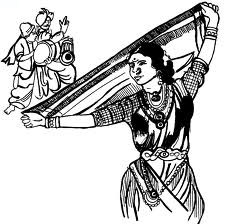 Lavani : 'Lavani' folk dance is a genre of music popular in Maharashtra and
southern Madhya Pradesh, Karnataka and Tamil Nadu States of India. Lavani is a combination
of traditional song and dance, which is particularly performed to the enchanting beats of
Dholak, a percussion instrument. Lavani is noted for its powerful rhythm and erotic sentiment.
Lavani has contributed substantially to the development of Marathi folk theatre In Maharashtra
and southern Madhya Pradesh.
Lavani : 'Lavani' folk dance is a genre of music popular in Maharashtra and
southern Madhya Pradesh, Karnataka and Tamil Nadu States of India. Lavani is a combination
of traditional song and dance, which is particularly performed to the enchanting beats of
Dholak, a percussion instrument. Lavani is noted for its powerful rhythm and erotic sentiment.
Lavani has contributed substantially to the development of Marathi folk theatre In Maharashtra
and southern Madhya Pradesh.
Singhi Chham
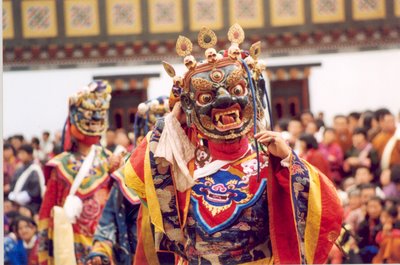 Singhi Chham :'Singhi Chham' folk dance is also known as Kanchendzonga Dance.
It is a folk dance native to Sikkim Region. The word 'Singhi Dance' means the 'Lion Dance'.
This masked dance is performed during the worship ritual of snowy range of Kanchenjunga
and the local people use this majestic dance as a way to display their cultural symbol.
Singhi Chham :'Singhi Chham' folk dance is also known as Kanchendzonga Dance.
It is a folk dance native to Sikkim Region. The word 'Singhi Dance' means the 'Lion Dance'.
This masked dance is performed during the worship ritual of snowy range of Kanchenjunga
and the local people use this majestic dance as a way to display their cultural symbol.
Kamandi
 Kamandi : 'Kamandi' or 'Kaman Pandigai' folk dance is celebrated in Tamil Nadu State
in southern India. It is celebrated to commemorate the puranic event when 'Manmada' the God
of Love was burnt to ashes by lord Shiva in anger. The villagers separate themselves into
two groups as Erintha katchi and Eriyatha katchi and a heated debate ensues represented by
the consorts - Kaman and Rathi, being the main characters.
Kamandi : 'Kamandi' or 'Kaman Pandigai' folk dance is celebrated in Tamil Nadu State
in southern India. It is celebrated to commemorate the puranic event when 'Manmada' the God
of Love was burnt to ashes by lord Shiva in anger. The villagers separate themselves into
two groups as Erintha katchi and Eriyatha katchi and a heated debate ensues represented by
the consorts - Kaman and Rathi, being the main characters.
Kummi
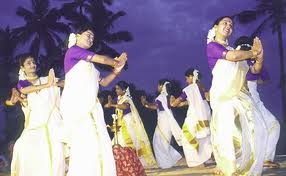 Kummi : 'Kummi' is a folk dance popular in Tamil Nadu and Kerala States of southern
India, practiced much by the women of Tamil Nadu state forming a circular dancing pattern.
It is usually a festival dance, the dancing pattern may be differ at different places, in
some places it is very simple, with rhythmic clapping whereas in other places dancers
imitate various harvesting activities. Kummi is often accompanied by songs, called "Kummi songs".
Kummi : 'Kummi' is a folk dance popular in Tamil Nadu and Kerala States of southern
India, practiced much by the women of Tamil Nadu state forming a circular dancing pattern.
It is usually a festival dance, the dancing pattern may be differ at different places, in
some places it is very simple, with rhythmic clapping whereas in other places dancers
imitate various harvesting activities. Kummi is often accompanied by songs, called "Kummi songs".
Kalikapatadi
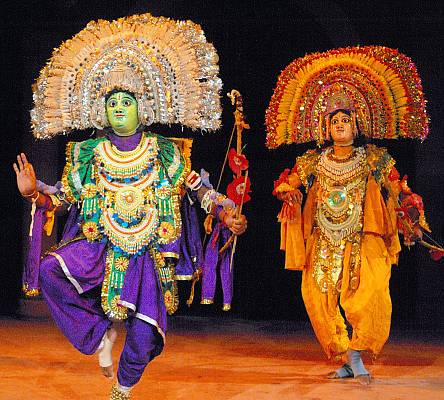 Kalikapatadi : Kalikapatadi dance form is mainly performed in West Bangal state
of eastern India, more prevalent in the Howrah region, The theme story of this Kalikapatadi
Bengali dance form is 'how Shiva calms down angry Kali after killing Asura (demons)' and on
the coronation of Shiva on Neelpuja Day (Chaitra Sankranti) the performance of this dance
is a must.
Kalikapatadi : Kalikapatadi dance form is mainly performed in West Bangal state
of eastern India, more prevalent in the Howrah region, The theme story of this Kalikapatadi
Bengali dance form is 'how Shiva calms down angry Kali after killing Asura (demons)' and on
the coronation of Shiva on Neelpuja Day (Chaitra Sankranti) the performance of this dance
is a must.
Jawara
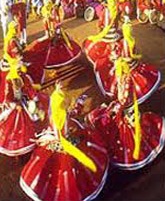 Jawara : Jawara folk dance is performed in the Bundelkhand area of Madhya Pradesh
state in central India. It is essentially a harvest dance reflecting the gaiety and
pleasure of the peasants who have reaped a good harvest in the season. The dance is
performed by men and women together.
Jawara : Jawara folk dance is performed in the Bundelkhand area of Madhya Pradesh
state in central India. It is essentially a harvest dance reflecting the gaiety and
pleasure of the peasants who have reaped a good harvest in the season. The dance is
performed by men and women together.
Dumhal
 Dumhal : Dumhal folk dance is performed in Jammu and Kashmir state in India.
The Dumhal is a dance performed by the menfolk of the Wattal tribe of Kashmir on
specific occasions. The performers wear long colorful robes and tall conical
caps studded with beads and shells. The dance party moves in a procession carrying
a banner in a very ceremonial fashion.
Dumhal : Dumhal folk dance is performed in Jammu and Kashmir state in India.
The Dumhal is a dance performed by the menfolk of the Wattal tribe of Kashmir on
specific occasions. The performers wear long colorful robes and tall conical
caps studded with beads and shells. The dance party moves in a procession carrying
a banner in a very ceremonial fashion.
Yakshagana
 Yakshagana : Yakshagana folk dance is a musical theater popular in the coastal
and Malenadu regions of Karnataka state in southern India. 'Yakshagana' is the
recent 250 years old scholastic name for what are known as "Dasavatara"
(Ten Avatars or ten incarnations of God Vishnu). It is believed to have evolved
from pre classical music and theatre during Bhakti (Devotional music) movement.
Yakshagana is popular in the Uttara Kannada, Udupi, Dakshina Kannada and Shimoga
districts of Karnataka and Kasaragod district of Kerala.
Yakshagana : Yakshagana folk dance is a musical theater popular in the coastal
and Malenadu regions of Karnataka state in southern India. 'Yakshagana' is the
recent 250 years old scholastic name for what are known as "Dasavatara"
(Ten Avatars or ten incarnations of God Vishnu). It is believed to have evolved
from pre classical music and theatre during Bhakti (Devotional music) movement.
Yakshagana is popular in the Uttara Kannada, Udupi, Dakshina Kannada and Shimoga
districts of Karnataka and Kasaragod district of Kerala.
Panthi
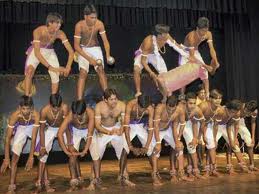 Panthi : Panthi is one of the prominent dance forms of Chhattisgarh state in
central India. The Panthi dance reflects the rich cultural heritage and traditional
legacies of the indigenous tribal groups of the region. Representing the vibrant and
dynamic cultural life of the local inhabitants of Chhattisgarh Region. Panthi dance
epitomizes the unique dance styles of the state.
Panthi : Panthi is one of the prominent dance forms of Chhattisgarh state in
central India. The Panthi dance reflects the rich cultural heritage and traditional
legacies of the indigenous tribal groups of the region. Representing the vibrant and
dynamic cultural life of the local inhabitants of Chhattisgarh Region. Panthi dance
epitomizes the unique dance styles of the state.
Kalbelia
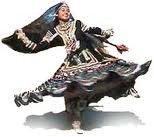 Kalbelia : Kalbelia is the one of the most sensuous dance forms of Rajasthan region
and is performed by the Kalbelia tribe. The Kalbelia dance is performed to celebrate any
joyful moment within the community. It is an integral part of their rich culture. Male
participants take care of the musical part of the dance. They use the different musical
instruments like Pungi, Dufli, Been, Khanjari, Morchang, Khuralio and Dholak to create
the rhythm and dancers perform.
Kalbelia : Kalbelia is the one of the most sensuous dance forms of Rajasthan region
and is performed by the Kalbelia tribe. The Kalbelia dance is performed to celebrate any
joyful moment within the community. It is an integral part of their rich culture. Male
participants take care of the musical part of the dance. They use the different musical
instruments like Pungi, Dufli, Been, Khanjari, Morchang, Khuralio and Dholak to create
the rhythm and dancers perform.
Mohiniatam Dance
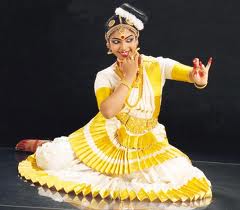 Mohiniatam Dance : 'Mohiniyattam' also Called Mohiniattam is a traditional South Indian
dance from Kerala State, developed by the Tamil Nattuvanar Vadivelu, one of the Thanjavur Quartet.
It is one of the eight Indian classical dance forms of the India. It is considered a very
graceful dance meant to be performed as a solo recital by women. The term Mohiniatam comes
from the words "Mohini" meaning a woman who enchants onlookers and "aattam" meaning graceful
body movements.
Mohiniatam Dance : 'Mohiniyattam' also Called Mohiniattam is a traditional South Indian
dance from Kerala State, developed by the Tamil Nattuvanar Vadivelu, one of the Thanjavur Quartet.
It is one of the eight Indian classical dance forms of the India. It is considered a very
graceful dance meant to be performed as a solo recital by women. The term Mohiniatam comes
from the words "Mohini" meaning a woman who enchants onlookers and "aattam" meaning graceful
body movements.
Manipuri Dance
 Manipuri Dance : Manipuri dance is one of the major Indian classical dance forms of the India.
It originates from Manipur state in north eastern India on the border with Myanmar. In Manipur,
surrounded by mountains and geographically isolated at the meeting point of the orient and mainland
India, the form developed its own specific aesthetics, values, conventions and ethics.
Manipuri Dance : Manipuri dance is one of the major Indian classical dance forms of the India.
It originates from Manipur state in north eastern India on the border with Myanmar. In Manipur,
surrounded by mountains and geographically isolated at the meeting point of the orient and mainland
India, the form developed its own specific aesthetics, values, conventions and ethics.
Odissi Dance
 Odissi Dance : Odissi is one of the eight classical dance forms of India. It originates from
the state of Odisha (Orissa), in eastern India. It is the oldest surviving dance form of India on
the basis of archaeological evidences. The classic treatise of Indian dance, Natya Shastra, refers
to it as Odra-Magadhi.
Odissi Dance : Odissi is one of the eight classical dance forms of India. It originates from
the state of Odisha (Orissa), in eastern India. It is the oldest surviving dance form of India on
the basis of archaeological evidences. The classic treatise of Indian dance, Natya Shastra, refers
to it as Odra-Magadhi.
Kuchipudi Dance
 Kuchipudi Dance : Kuchipudi or 'Koochipoodi' is a classical Indian dance form from
Andhra Pradesh state of southern India. Kuchipudi is the name of a village in the Divi Taluka
of Krishna district that borders the Bay of Bengal and with resident Brahmins practicing this
traditional dance form. Kuchipudi dancers are quicksilver and scintillating, and rounded and
fleet footed, performed to the classical Carnatic music, it shares many common elements with
Bharatanatyam Dance Form.
Kuchipudi Dance : Kuchipudi or 'Koochipoodi' is a classical Indian dance form from
Andhra Pradesh state of southern India. Kuchipudi is the name of a village in the Divi Taluka
of Krishna district that borders the Bay of Bengal and with resident Brahmins practicing this
traditional dance form. Kuchipudi dancers are quicksilver and scintillating, and rounded and
fleet footed, performed to the classical Carnatic music, it shares many common elements with
Bharatanatyam Dance Form.
Kathakali Dance
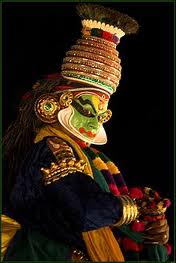 Kathakali Dance : Kathakali Dance is a highly stylized classical Indian dance noted
for the attractive make-up of characters, elaborate costumes, detailed gestures and well-defined
body movements presented in tune with the anchor playback music and complementary percussion.
It originated in the state of Kerala in southern India during the 17th century and has developed
over the years with improved looks, refined gestures and added themes besides more ornate singing
and precise drumming.
Kathakali Dance : Kathakali Dance is a highly stylized classical Indian dance noted
for the attractive make-up of characters, elaborate costumes, detailed gestures and well-defined
body movements presented in tune with the anchor playback music and complementary percussion.
It originated in the state of Kerala in southern India during the 17th century and has developed
over the years with improved looks, refined gestures and added themes besides more ornate singing
and precise drumming.
Kathak Dance
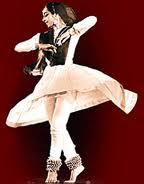 Kathak Dance : Kathak Dance is one of the eight forms of Indian classical dances, originated
from Uttar Pradesh State, India. This dance form traces its origins to the nomadic bards of ancient
northern India, known as Kathaks, or storytellers. These bards, performing in village squares and
temple courtyards, mostly specialized in recounting mythological and moral tales from the scriptures,
and embellished their recitals with hand gestures and facial expressions.
Kathak Dance : Kathak Dance is one of the eight forms of Indian classical dances, originated
from Uttar Pradesh State, India. This dance form traces its origins to the nomadic bards of ancient
northern India, known as Kathaks, or storytellers. These bards, performing in village squares and
temple courtyards, mostly specialized in recounting mythological and moral tales from the scriptures,
and embellished their recitals with hand gestures and facial expressions.
Bharatnatyam Dance
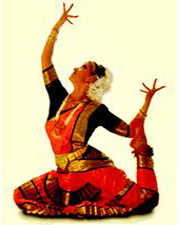 Bharatnatyam Dance : Bharatanatyam or Bharata Natyam is a classical dance form from the South Indian
state of Tamil Nadu, nowadays practiced predominantly by girls.It is held as the national dance of India.
The dance is accompanied by classical Carnatic music. Its inspirations come from the sculptures of the
ancient temple of Chidambaram. Bharatanatyam proper is a solo dance, with two aspects - 'Lasya', the
graceful feminine lines and movements, and 'Tandava' - Ananda Thandavam (Tamil - the dance of Shiva),
masculine aspect - which is identical to the Yin and Yang in the Chinese culture.
Bharatnatyam Dance : Bharatanatyam or Bharata Natyam is a classical dance form from the South Indian
state of Tamil Nadu, nowadays practiced predominantly by girls.It is held as the national dance of India.
The dance is accompanied by classical Carnatic music. Its inspirations come from the sculptures of the
ancient temple of Chidambaram. Bharatanatyam proper is a solo dance, with two aspects - 'Lasya', the
graceful feminine lines and movements, and 'Tandava' - Ananda Thandavam (Tamil - the dance of Shiva),
masculine aspect - which is identical to the Yin and Yang in the Chinese culture.
Chhau
 Chhau : Chhau has its origin in the martial art form of Eastern India and has
branches in three different places. In this style dancers also use real masks. All
branches have dance names related to the names of places.
Chhau : Chhau has its origin in the martial art form of Eastern India and has
branches in three different places. In this style dancers also use real masks. All
branches have dance names related to the names of places.
1. Mayurbhanj Chhau, developed at the palace named Mayurbhanj in Orissa state of India
2. Seraikela Chhau, this dance was developed at a place called Seraikela in Bihar state of India
3. Purulia Chhau, it was developed in Purulia in West Bengal state of India
These all three dance style have their own identity and integrity. This dance is also based
on Hindu Mythology and actors play their character of mythological heroes & heroines like
Durga, Shiva, Ganesha & kartikeya etc.
